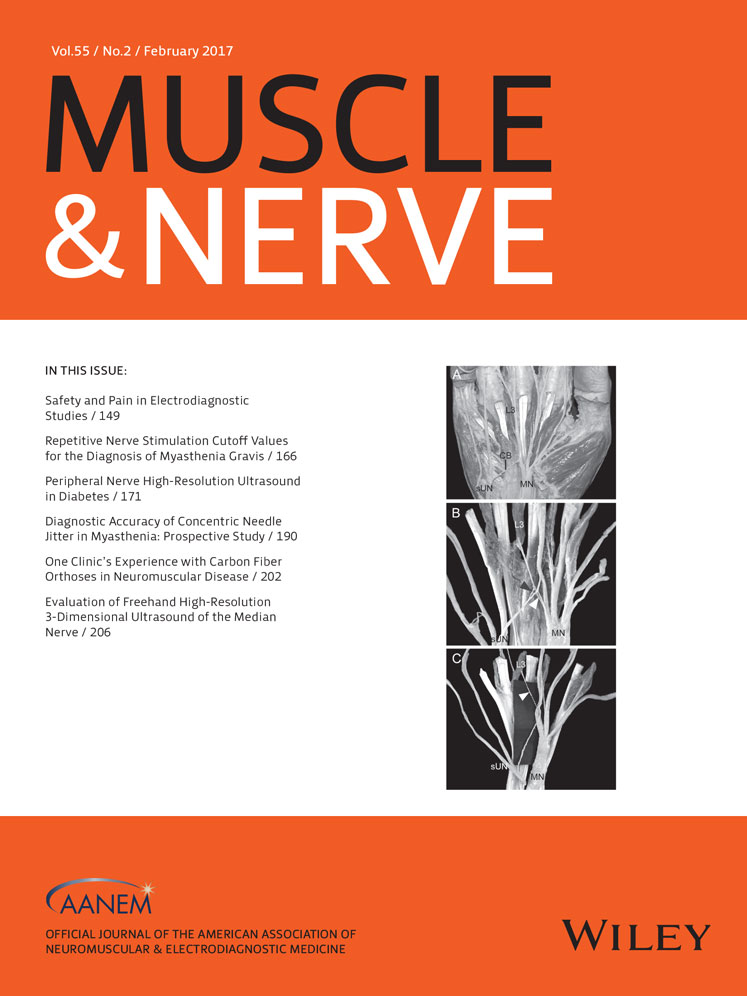Repetitive nerve stimulation cutoff values for the diagnosis of myasthenia gravis
Disclosures: Hans Katzberg has received research grants and speaker support from Grifols; research grants, advisory board honoraria and speaker support from CSL Behring; speaker / travel support from Genzyme Canada. Vera Bril has been a consultant for Grifols, CSL, Lilly, Pfizer, Bionevia, Eisai, and Dainnipon Sumitomo and has received research support from all. No funding was received in the publication of this article.
Conflicts of Interest: The authors have no conflicts of interest to report.
ABSTRACT
Introduction
Repetitive nerve stimulation (RNS) showing ≥ 10% decrement is considered the cutoff for myasthenia gravis (MG), but this has never been validated. The objective of this study was to find an optimal validated cutoff value for decrement on RNS. Methods: We performed retrospective chart review of patients who had electrophysiological assessment for possible MG from 2013 to 2015. Results: A total of 122 patients with MG and 182 controls were identified. RNS sensitivities for generalized and ocular MG using the traditional ≥10% cutoff value were 46% and 15%, respectively, for frontalis recordings, and 35% and 19%, respectively, for nasalis recordings. Using a decrement cutoff value of 7% for frontalis and 8% for nasalis increased the sensitivities by 6–11%, with specificities of 95–96%. Conclusions: For RNS in facial muscles, we suggest a cutoff value of 7–8%, which increases test sensitivity by 6–11%, while preserving high specificity for the diagnosis of MG. Muscle Nerve, 2016 Muscle Nerve 55: 166–170, 2017




